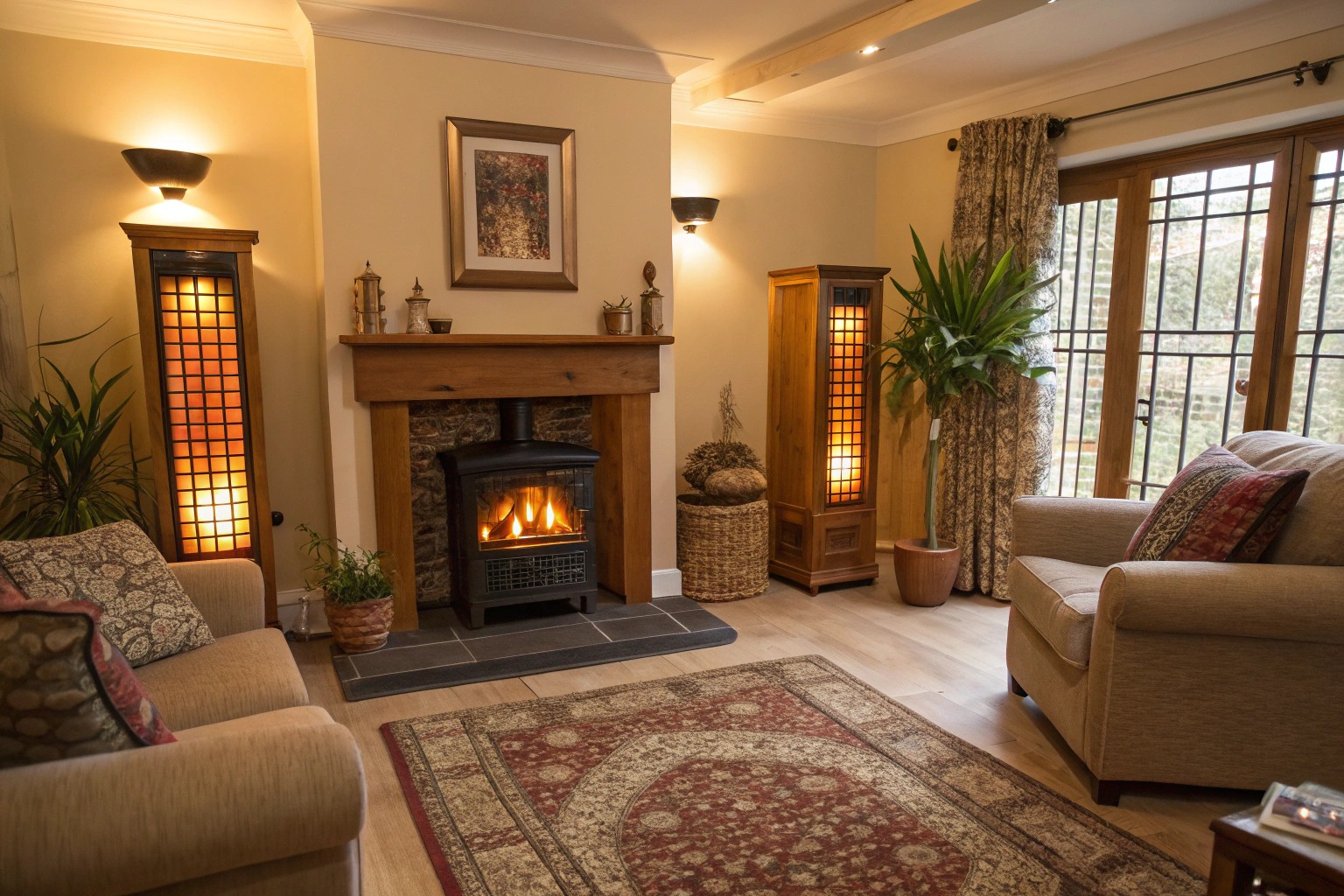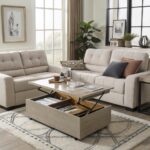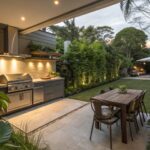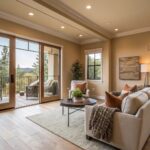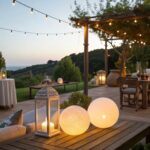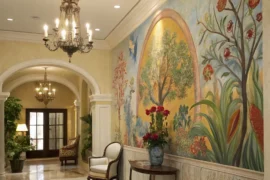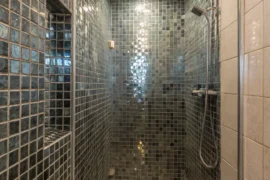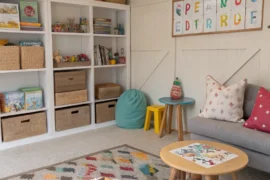Radiators and HVAC systems present unique design challenges that can make or break a space’s aesthetic appeal. In my years working with historic buildings and modern homes across America, I’ve discovered that these functional necessities don’t have to be eyesores – they can become integral design elements or discreetly blend into your carefully curated interior.
Understanding Your Heating and Cooling Systems
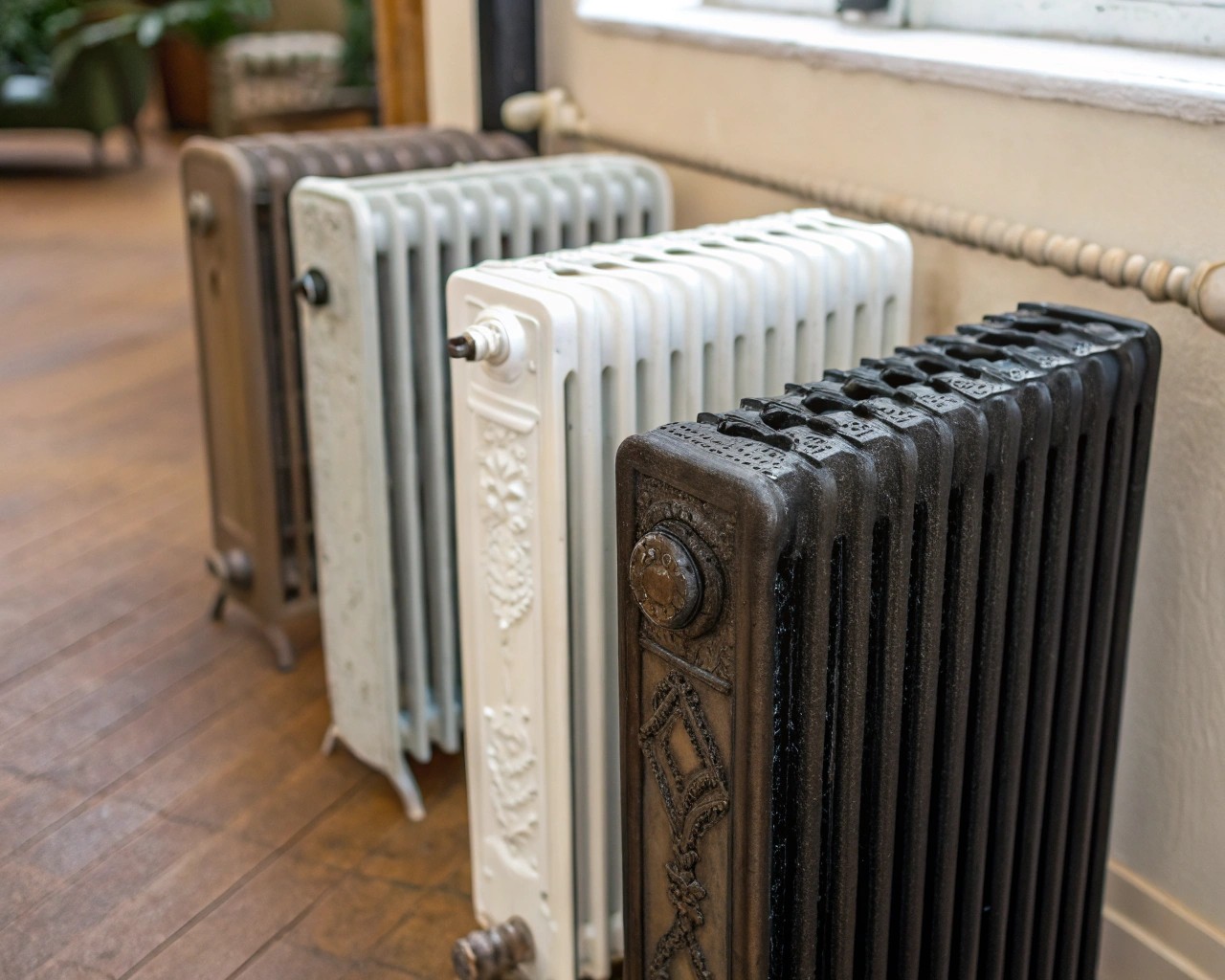
Before implementing design solutions, it’s crucial to understand what you’re working with:
| System Type | Characteristics | Design Challenges | Design Opportunities |
|---|---|---|---|
| Hot Water Radiators | Use boiler-heated water; provide consistent heating | Bulky, fixed positions | Can be customized with covers or paint |
| Steam Radiators | Common in older homes; use steam instead of water | Typically larger, less flexible placement | Historic charm, potential statement pieces |
| Electric Radiators | Standalone units; no central system required | Wall space needed | More modern designs, flexible placement |
| Forced-Air HVAC | Uses ducts and vents | Requires strategic vent placement | Can be concealed with decorative grilles |
| Mini-Split Systems | Ductless with wall-mounted units | Visible wall components | Can be built into shelving or cabinetry |
One of my first professional challenges involved a Brooklyn brownstone with original cast-iron radiators in every room. The client initially wanted to remove them all, but we discovered that these pieces could become stunning focal points when properly restored and integrated into the design scheme.
Strategic Design Approaches for Radiators
Embracing Radiators as Design Elements
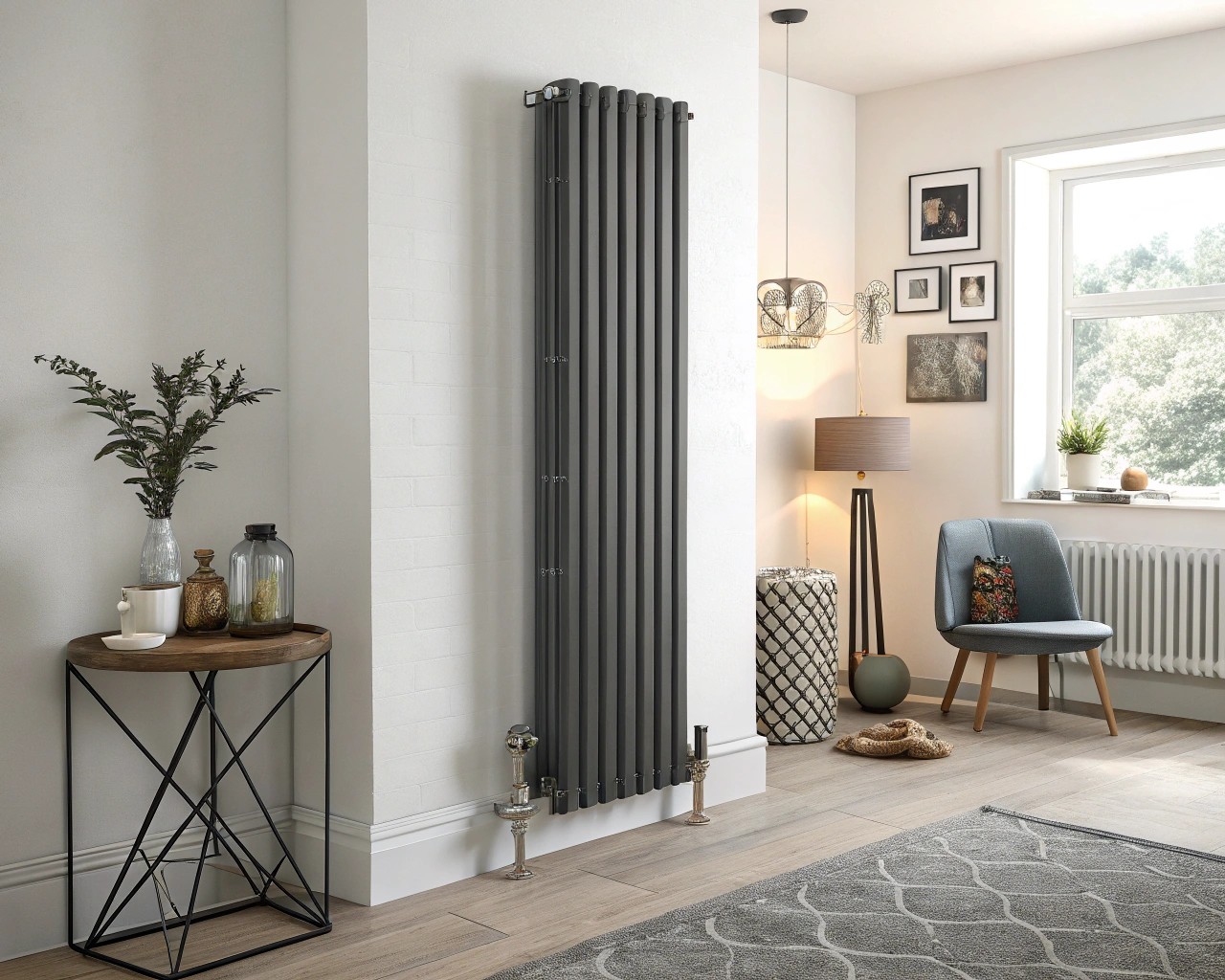
When we approach radiators as opportunities rather than obstacles, interesting possibilities emerge:
- Color coordination – Paint radiators to either blend with walls or create intentional contrast
- Material selection – Modern radiators come in aluminum (heats quickly) or steel (retains heat longer)
- Designer styles – Consider vertical, horizontal, or curved models that complement your aesthetic
- Artistic approach – In contemporary settings, some radiators can function as sculptural elements
One striking example comes from designer colleague Marcus Chen, who recounted how a Boston client turned Victorian radiators into highlights by painting them gold to match hardware and lighting. This approach effectively made them feel like intentional ‘jewelry for the room’ rather than obstructions.
Concealing Radiators When Necessary
Sometimes hiding is the best strategy:
- Custom covers – Bespoke radiator covers transform utilitarian objects into furniture-like pieces
- Bench integration – Small radiators can disappear under specially designed seating
- Adjustable designs – Choose flexible covers if you might rearrange later
- Curved options – In hallways, curved radiator covers prevent bumps while creating display space
Case Study: The Historic Apartment Transformation
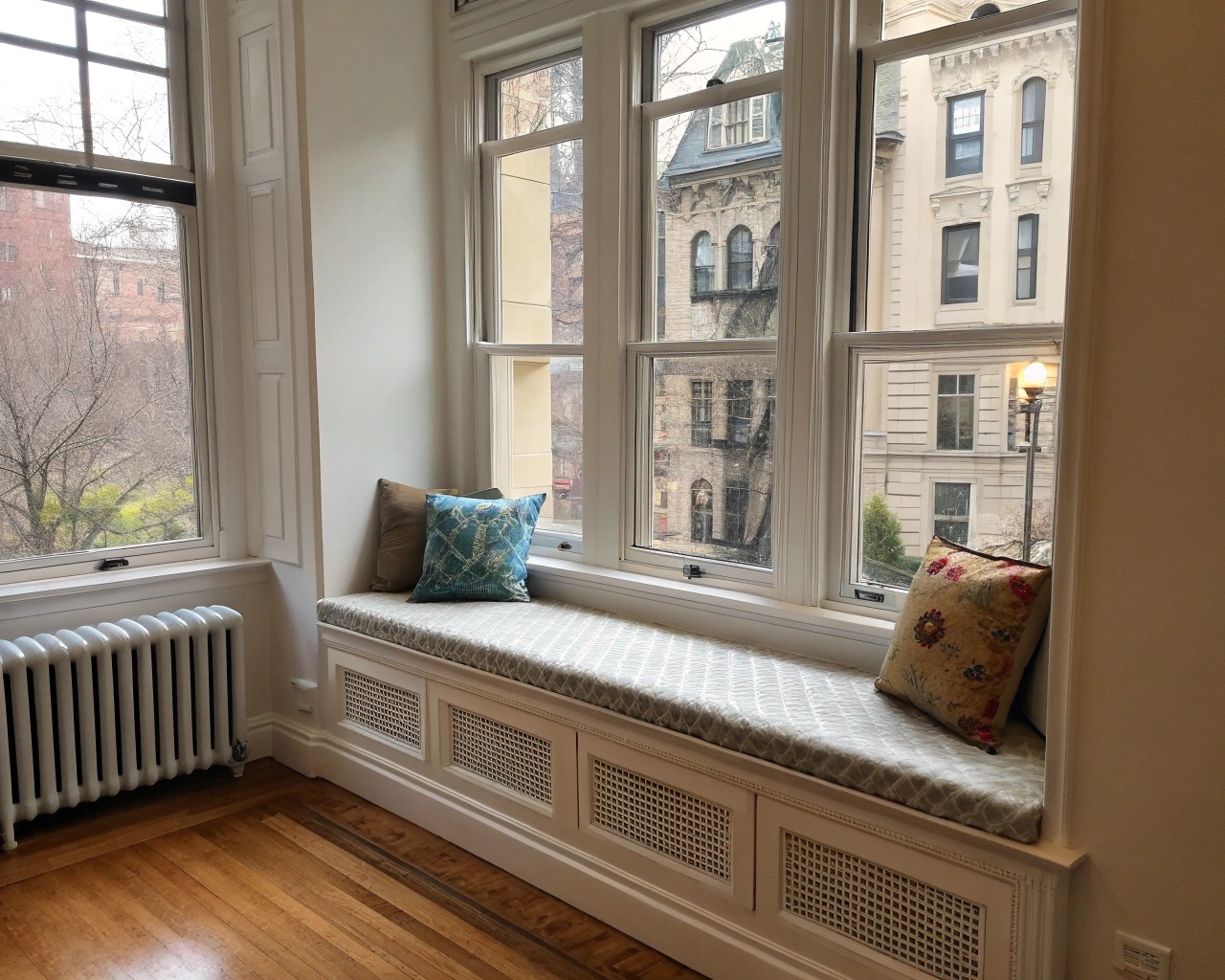
We recently renovated a pre-war apartment in Chicago where massive radiators dominated every room. The client wanted a modern aesthetic without losing the heating benefits. Our solution was three-pronged:
- In the living room: We designed a custom window seat that incorporated the radiator within its base, using metal mesh panels to allow heat flow
- In the bedroom: We painted the radiator the exact shade of the wall color for a disappearing effect
- In the dining room: We embraced the radiator as a feature, cleaning and polishing it to highlight its architectural details
Creative Solutions for HVAC Components
Modern HVAC systems present different challenges with their distributed components:
Vent and Grille Integration
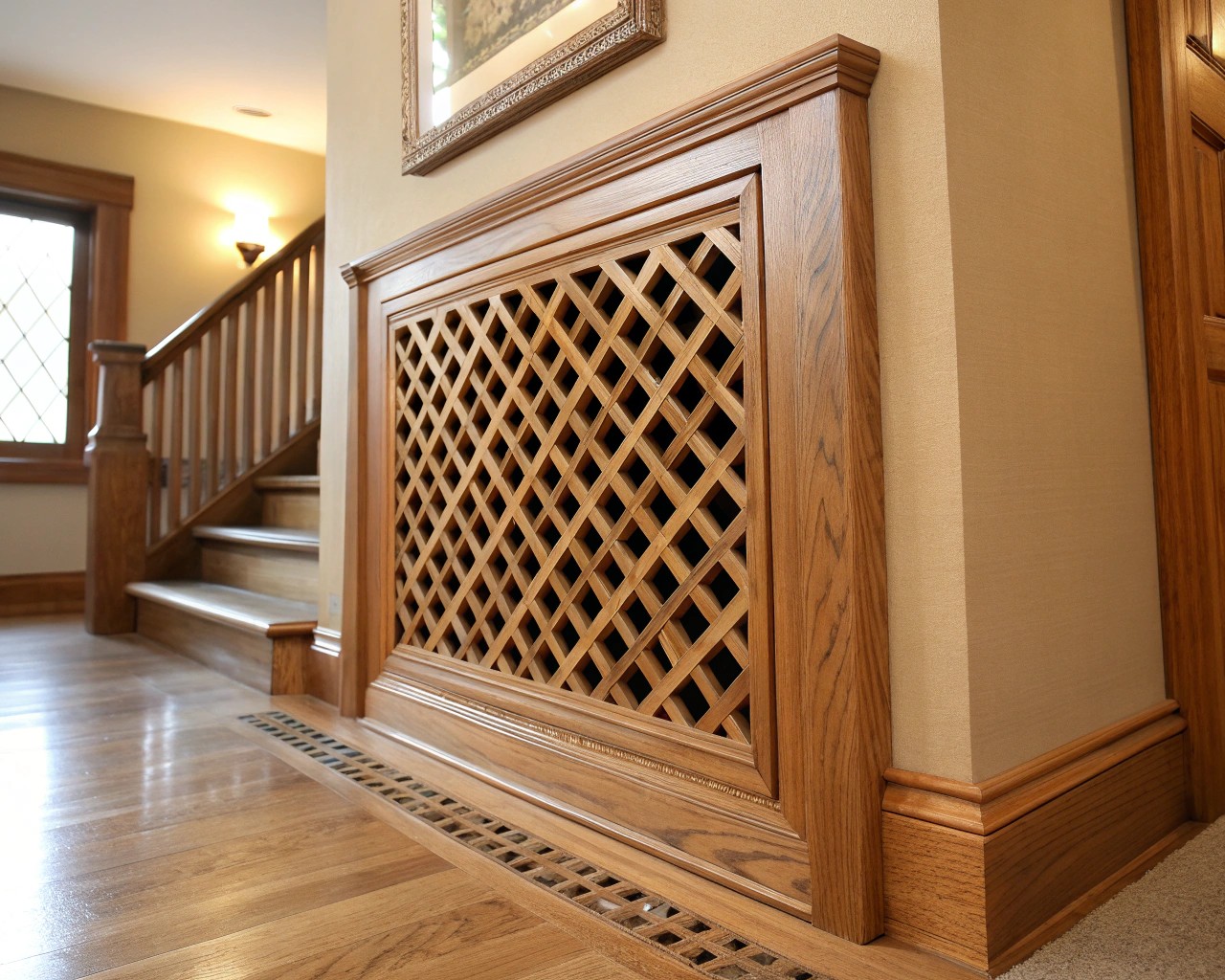
The most visible elements of forced-air systems can be beautifully integrated:
- Decorative replacements – Swap standard vents with decorative grilles that complement your design theme
- Custom covers – Wooden lattices or painted slats can match surrounding decor
- Strategic placement – Position floor registers under furniture overhangs where possible
- Color matching – Paint vents to match surrounding surfaces for minimal visual impact
Thermostat Solutions
You don’t have to live with an eyesore on your wall:
- Smart upgrades – Consider models designed with aesthetics in mind, like Nest thermostats with customizable trim rings
- Artistic concealment – Mount hinged artwork that swings open to reveal the thermostat when needed
- Gallery integration – Incorporate the thermostat into a gallery wall with a decorative frame around it
My colleague Teresa Williams successfully concealed a thermostat in a client’s minimalist living room using this technique. By recessing the unit and painting it to blend seamlessly with the wall, it became virtually invisible to casual observers unless pointed out.
Room-by-Room Approaches
Different spaces demand different solutions:
Living Areas
In primary living spaces, balance is key:
- Position furniture at least 100mm from sides of radiators and 150mm above to ensure proper airflow
- Create conversation areas that work with, not against, your heating elements
- Consider radiator placement when selecting window treatments (shorter curtains or blinds often work best)
- For forced-air systems, ensure return vents remain unobstructed for system efficiency
Bedrooms
In bedrooms, both comfort and aesthetics matter:
- Select radiator models designed with safety in mind, especially for children’s rooms
- Use vertical designer radiators to save valuable floor space
- Position beds and dressers to maintain proper clearance from heating elements
- Consider heated towel rails in master suites that serve dual purposes
Kitchens and Bathrooms
These functional spaces require thoughtful integration:
- Utilize toe-kick heating under cabinets to free up wall space
- In renovations, consider relocating radiators to less prominent positions
- For bathrooms, aluminum radiators heat quickly and are more moisture-resistant than other options
- Consider color drenching techniques to make radiators disappear into monochromatic schemes
Furniture Placement for Optimal HVAC Performance
The way you arrange your furniture significantly impacts both aesthetics and system efficiency:
Placement Guidelines for Efficiency
- Keep furniture away from heating and cooling vents and radiators
- Position larger pieces toward room centers rather than against exterior walls with radiators
- Orient seating away from exterior walls to avoid blocking airflow through windows
- Consider seasonal adjustments to furniture placement for optimal year-round comfort
We once worked with a client who couldn’t understand why her living room felt cold despite a powerful radiator. The culprit? Her oversized sectional sofa positioned directly in front of the heat source, blocking warm air from circulating through the room.
Modern Solutions for Traditional Systems
Technology offers exciting ways to work with older heating and cooling systems:
Smart Upgrades
- Programmable thermostatic radiator valves for zone control
- Decorative insulation panels behind radiators to reflect heat back into rooms
- Hybrid systems combining traditional radiators with modern HVAC components
- Low-profile fan units that improve radiator efficiency while maintaining aesthetics
Case Study: The Colonial Revival Renovation
Recently, we completed a Colonial Revival home renovation in New England. The owners loved their traditional radiators but wanted modern comfort. Our approach:
- Installed smart thermostatic valves on each radiator for individual room control
- Designed custom cabinets with perforated metal panels that enclosed radiators while allowing proper heat flow
- Added reflective panels behind radiators to improve efficiency
- Incorporated a supplemental mini-split system discreetly mounted high on walls in key spaces

